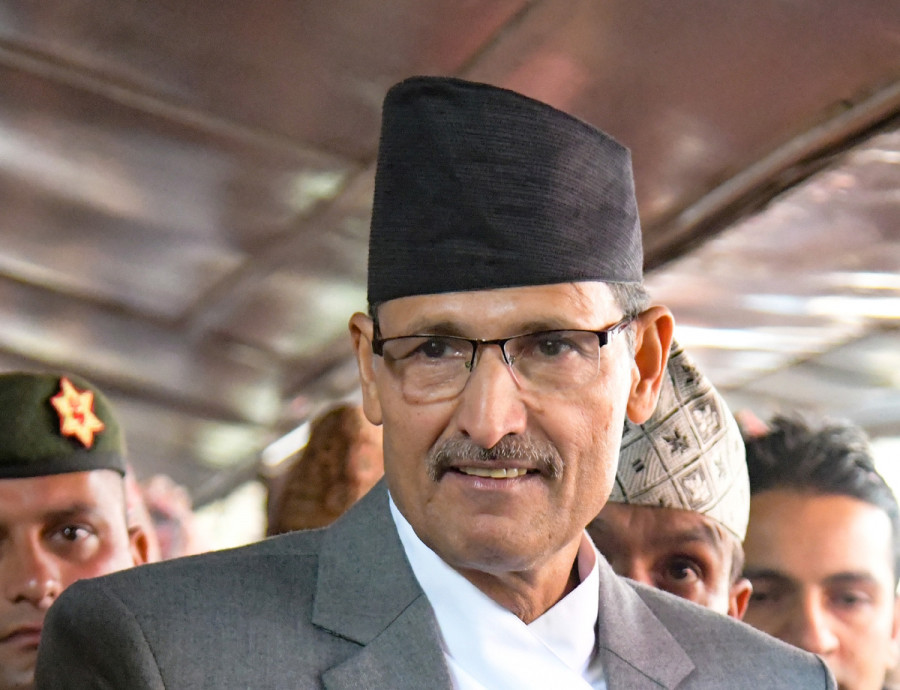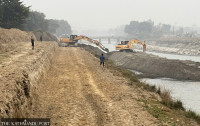National
Can the Speaker revive the House dissolved by the executive?
There is no constitutional provision for the Speaker to restore the House. If he does, it would be another blow to the constitution, some observers warn.
Binod Ghimire
Speak of the dissolved House of Representatives and Agni Sapkota is in a fix.
There is pressure on him to convene the meeting of the House of Representatives that President Bidya Devi Bhandari dissolved on Sunday on the recommendation of the KP Sharma Oli Cabinet.
On Thursday, the leadership of the Janata Samajbadi Party led by its Federal Council Chair Baburam Bhattarai and Party Chair Upendra Yadav met him and urged him to convene the lower house.
“The House is alive as it cannot be dissolved by the whim of an individual. The Speaker has every right to call its meeting,” Laxman Lal Karna, a leader of the party who was present in the meeting, told the Post.
“Sovereignty is vested in the people and the lawmakers are the representatives of the sovereign people. We haven’t accepted that the sovereign parliament has been dissolved by a move of the prime minister or President. The Speaker, therefore, can call the House.”
The leaders of the third largest party in the dissolved 275-member House of Representatives with 34 seats went to meet the Speaker a day after he issued a statement saying that there is no constitutional ground to dissolve the House.
“Article 76 of the constitution has a clear provision that the House of Representatives cannot be dissolved as long as there is the possibility to form a government,” Sapkota stated. “Once again there is a necessity of high-level understanding among the political parties to protect the constitution.”
If the House does get reinstated from outside the Supreme Court, it will not be the first time that this will have been done in Nepal’s parliamentary history.
The House of Representatives that then prime minister Sher Bahadur Deuba dissolved in 2002 was reinstated in 2006 after a massive uprising led by all major political parties against the rule of then king Gyanendra Shah.
Dev Gurung, who was the chief whip of the Nepal Communist Party until the Parliament was dissolved, said on Monday that there are other ways to resume the House if the Supreme Court doesn’t do so.
“There could be other ways to revive the House,” Gurung said. “If there is consensus among all political parties represented in Parliament, it can be resurrected like in 2006.”
But not everyone buys this argument.
“The issue [of House reinstatement] is in the Supreme Court, which has the authority to interpret the constitution,” said former Supreme Court justice Balaram KC. “Everyone should wait for its decision.”
KC was one of the lawyers who advocated in the Supreme Court on behalf of the two governments when the lower house had been dissolved in the 1990s by the sitting prime ministers and the issue had reached the court.
But there are lawyers who argue that the House does not necessarily have to be reinstated by the Supreme Court.
“The Speaker can take that step, with the consent of a majority of lawmakers, as a political move to correct the unconstitutional move to dissolve the House,” said senior advocate Yubaraj Sangroula, a former attorney general who currently is executive director at the Kathmandu School of Law.
Sapkota became Speaker on January 26 following the resignation of Krishna Bahadur Mahara after a criminal charge of attempt to rape was levelled against him.
Sapkota had been elected to the House of Representatives in the 2017 general elections representing the Communist Party of Nepal (Maoist Centre) led by Oli’s bete noire and chair of Nepal Communist Party Pushpa Kamal Dahal.
The Maoist Centre had an electoral alliance with Oli’s CPN-UML in the general elections and the two parties unified in May 2018 to become Nepal Communist Party (NCP) with an almost two-thirds majority in the lower house.
Although Sangroula accepts there is no provision in the constitution for the Speaker to revive Parliament, he argues that there is jurisprudence which says any step that has a moral justification falls under the rule of law.
Those suggesting that Sapkota can convene the House say he can take the step as per Articles 103 (2) and 76 (1) of the Constitution of Nepal.
Article 103 (2), which talks about the privileges of Parliament, says: “Each House of Parliament shall have full power to regulate its internal business, and it shall be the exclusive right of the House concerned to decide whether or not any proceeding of the House is regular. No question shall be raised in any court on this behalf.”
There is also the issue that Parliament needs to be convened by January 2, as per constitutional provisions.
Article 93 (1) says the interval between the two consecutive sessions can not be more than six months. The last session of Parliament was prorogued on July 2.
However, experts say Articles 103 (2) and 93 (1) are enforced only when the House is functional.
“The House remains dissolved unless the Supreme Court revokes the dissolution although we may say it's unconstitutional,” Mohan Lal Acharya, who worked as a legal adviser to the Constituent Assembly. “We will have to trust the judiciary if we believe in the constitution.”
But others argue that the basis for reinstatement of the House would be that the dissolution power does not rest with the prime minister, despite Nepal having a parliamentary democracy.
“Ours is not a fully Westminster system. Therefore, it’s the Speaker who is the leader of Parliament, not the prime minister,” Sangrouls told the Post. “He, therefore, can take steps to resume the lower house.”
That, others argue, is not possible as per Nepal’s constitution.
Acharya said every decision needs to be in line with the Constitution of Nepal. There is no provision in the constitution which authorises Sapkota to convene the House.
Former Supreme Court justice KC warns of the repercussions if the Speaker convenes the House.
“Two wrongs don’t make a right,” he told the Post. “If Sapkota takes any step towards House resumption, that will be yet another blow to the Constitution.”




 9.12°C Kathmandu
9.12°C Kathmandu















